japanese paintings
Five Beautiful Japanese Paintings to Appreciate!

Sophia Wasylinko
Posted on April 16, 2024
Share:

Japanese paintings are an essential part of art history. They showcase aspects such as historical events, nature, and mythology and are a window into past eras with their styles and sensibilities.
We’ve chosen five classic Japanese paintings to highlight specific painters and their techniques and contributions to Japanese art. From more traditional pieces to innovative works, human portraits, and nature studies, they’re all undoubtedly exquisite treasures that inspire local and foreign artists today.
“Lady Murasaki Writing At Her Desk” (Tosa Mitsuoki)
Tosa Mitsuoki was a renowned Edo Period artist who took over the Tosa School from his father, Mitsunori. Later, he became a Buddhist monk and passed his position on to his son Mitsunari. Considered one of the best Yamato-e (classic Japanese art) painters of his time, Mitsuoki’s works include “Egrets and Cotton Roses,” “Genji Monogatari Folding Screen,” and this painting of The Tale of Genji author Murasaki Shibu.
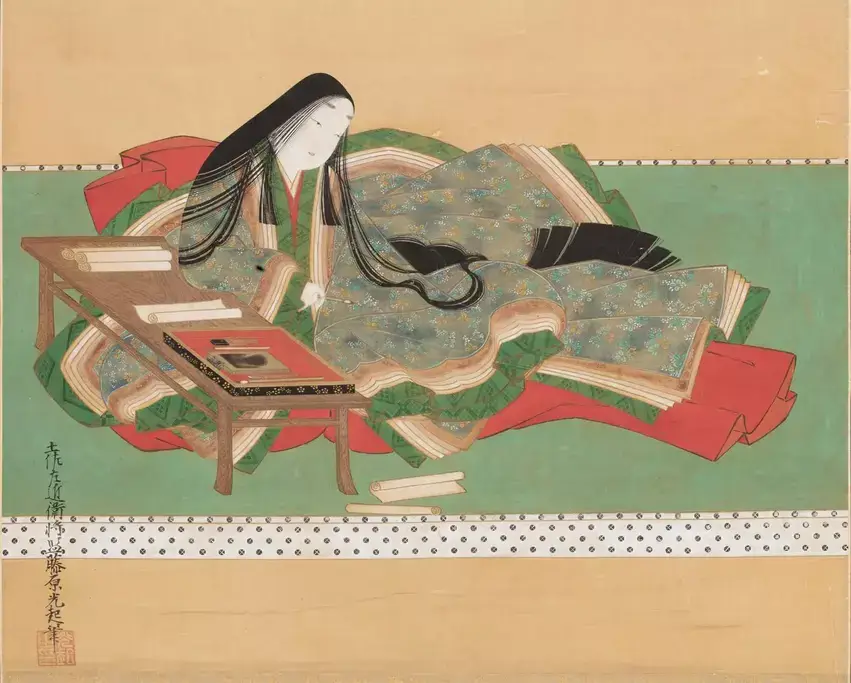
“Lady Murasaki Writing At Her Desk” mixes the Japanese Tosa School and Chinese Kanō School styles. In the Tosa School, Mitsuoki uses delicate lines and gold leaf. In the Kanō School, he incorporates space and light touch, calligraphy, and sketch-like inkwork. This combination revitalized both the Tosa School and Yamato-e in general. “Lady Murasaki” is currently on display at Ishiyamadera Temple in Otsu, Shiga.
“Ten Studies in Female Physiognomy” (Kitagawa Utamaro)
Next, we have a series of ukiyo-e (woodblock) prints by Kitagawa Utamaro. While there is little information about his personal life, he is most notable as an ukiyo-e painter. Kitagawa also produced risque content and faced harsh censorship in later years. For example, he was detained with five other artists for fifty days in 1804 after publishing the Ehon Taikōki (An Illustrated Life of Toyotomi Hideyoshi.
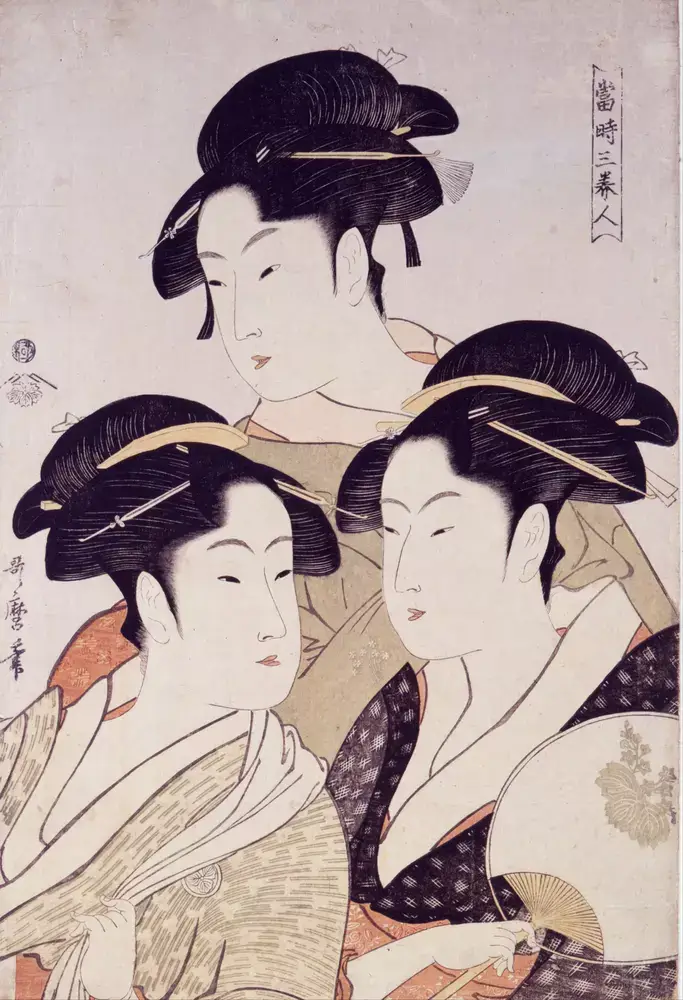
Fujin Sōgaku Jittai (“Ten Studies in Female Physiognomy”) are paintings of bijin-ga ōkubi-e (beautiful women with large heads). Eschewing traditional representations, Utamaro portrays women with big heads, long noses, and slim necks, focusing on their upper bodies instead of complete profiles. Additionally, he used techniques including kirazuri (applying mica dust for glittery backgrounds), sumptuous fabrics, and subtle facial features. Overall, Utamaro’s works increased the popularity of Japonism, which influenced Impressionist painters.
Are you looking for artisanal snacks while enjoying classic Japanese paintings? Check out Sakuraco! Sakuraco delivers traditional Japanese snacks, teas, and sweets from local Japanese makers directly to your door.

“Reading in a Bamboo Grove” (Tenshō Shūbun)
This shigajiku (inkwash hanging scroll) is attributed to Tenshō Shūbun. A Zen Buddhist monk, his main influences were Song Dynasty paintings and his mentor, the Chinese artist Josetsu. Moreover, as one of the Muramachi period’s highest-regarded painters, Shūbun taught several other famous artists, including Sesshū Tōyō and possibly Kanō Masanobu.
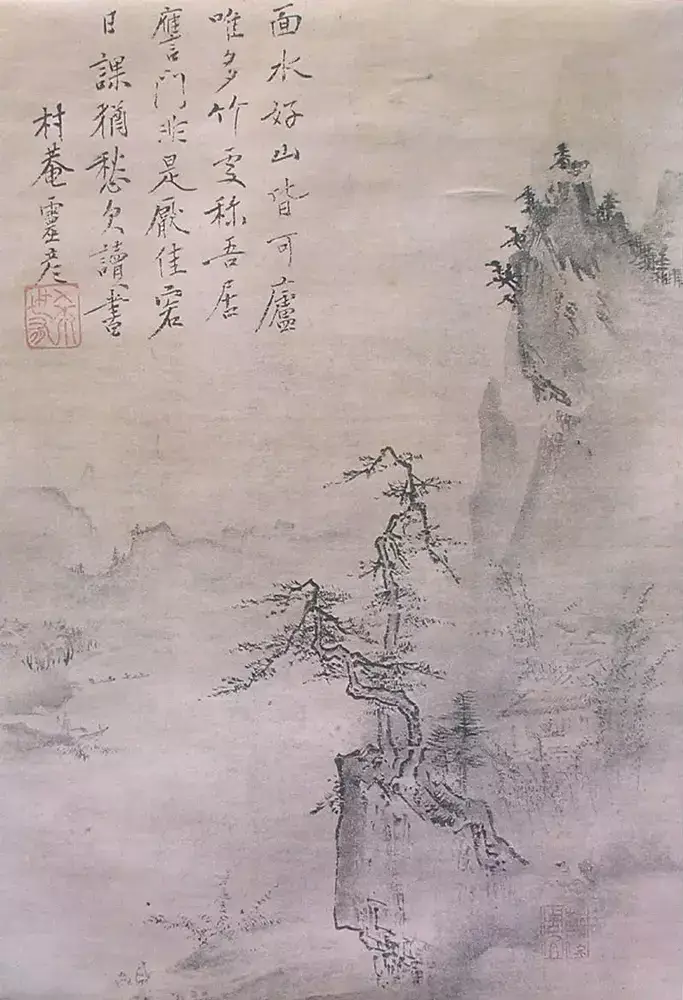
Shūbun’s most famous painting, “Reading in a Bamboo Grove” showcases the Chinese inkwash technique in suiboku paintings. In addition to varying brushstrokes separating the trees and rocks, the artwork captures the Zen concepts of space and solitude. Like Mitsuoki, Shūbun was a bridge between the Chinese and Japanese art schools. Designated a National Treasure, “Reading in a Bamboo Grove” is currently at the Tokyo National Museum.
“Oirase Ravine (Autumn)” (Genso Okuda)
Genso Okuda studied under Kodama Kibo and became an influential Nihonga (Japanese mineral painting) artist. He eventually became chief director of the Nitten (Japan Fine Arts Exhibition) and received the Order of Culture, among other awards. Okuda challenged himself to complete one large-scale painting each year in his seventies until he turned 80. “Oirase Ravine (Autumn)” emerged from this challenge.
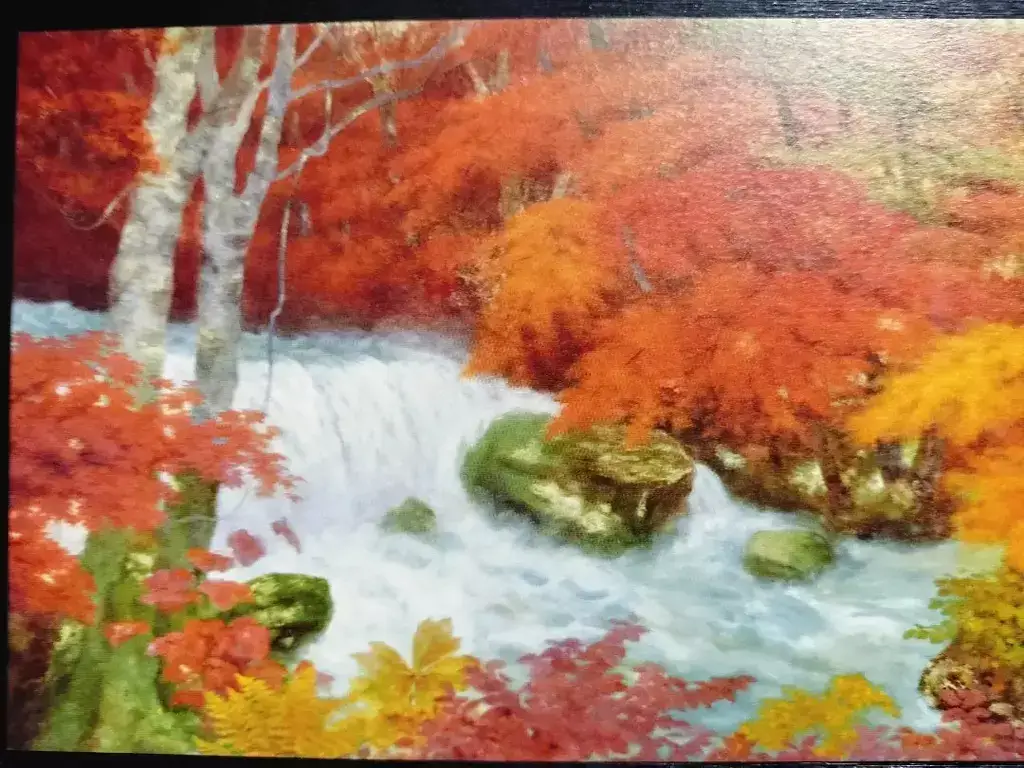
The fiery red color draws viewers’ attention instantly. Called “Genso red,” Okuda loved using the color, as it symbolized life itself, and opted for it over more subdued blues and greens. Less detailed than other contemporary paintings, there is a sense of movement through the brushstrokes in the leaves and the Oirase River. Okuda also painted a supplementary panel, “Oirase Ravine (Spring).”
“Maiko” (Seiki Kuroda)
Our final selection is Seiki Kuroda’s “Maiko.” After studying in France, Kuroda was influenced by Western art and became one of the most essential yōga (Western-style) artists. His blend of Japanese subjects, Western techniques, and controversial works, such as his nude paintings, drew criticism and inspired many young artists. Kuroda won many awards, including France’s Grand Cross of the Legion d’Honneur and Japan’s Order of the Rising Sun (posthumous).
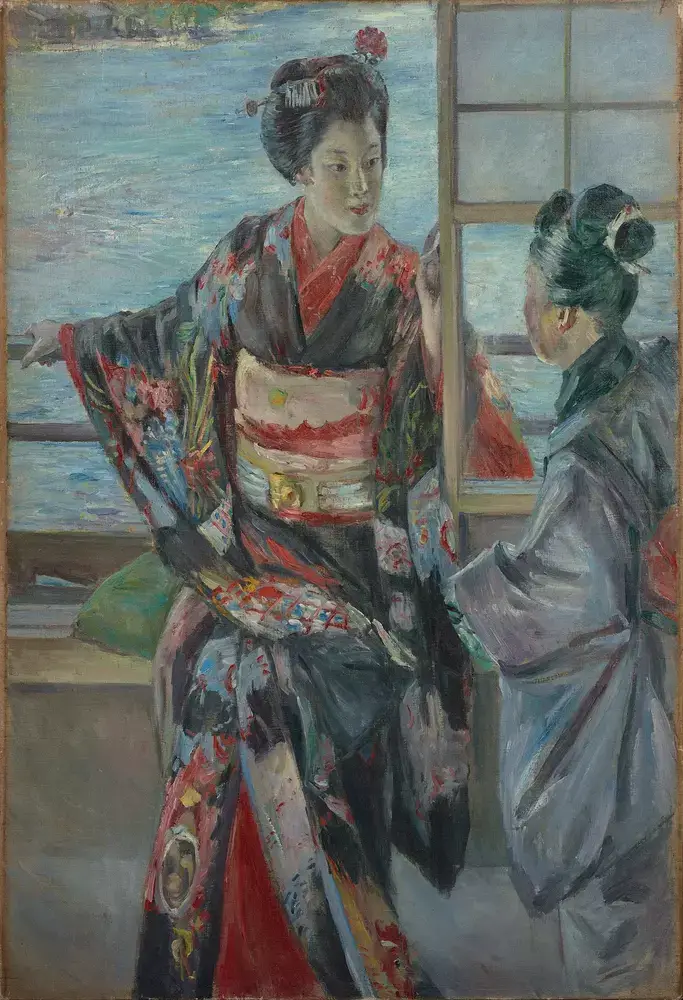
One of Kuroda’s most famous paintings resulted from a visit to Kyoto’s Gion Corner. “Maiko” is inspired by plein-air paintings and incorporates bright color tones and loose brushstrokes, creating a dynamic image. He also used violet paint to create shadows and show the changing light. Additionally, it’s one of two of Kuroda’s paintings to be selected as commemorative postage stamps, the other being “Lakeside.”
Why are these Japanese paintings important?
First, these Japanese paintings show an evolution in portraying certain subjects. The simplicity of “Reading in the Bamboo Grove” contrasts with the vivacity of “Oirase Ravine (Autumn).” And the depiction of women visibly differs between “Lady Murasaki” and “Maiko.”
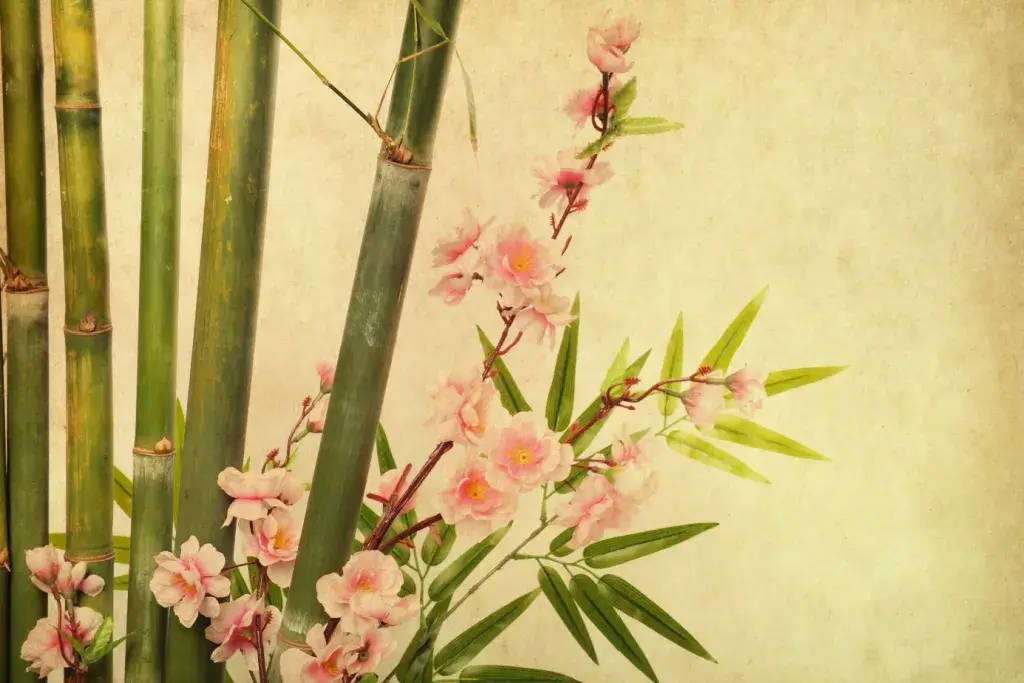
The pieces also showcase their artists’ philosophies. “Lady Murasaki” shows the influence of Chinese paintings, while “Maiko” has an unmistakable Impressionist influence. Shūbun’s background as a Zen Buddhist monk is as clear as Okuda’s passion for life.
Finally, each painting is groundbreaking. For example, while Mitsuoki and Shūbun subtly incorporate Chinese techniques, Utamaro disregards beauty standards, and Okuda trades tranquility for vibrancy. Finally, Kuroda elicits revulsion and excitement through his Western-style works. Through these innovations, all artists undoubtedly capture their Japanese heritage uniquely. Which of these classic Japanese paintings is your favorite? Are there other pieces we should have mentioned? Tell us in the comments.

Discover authentic flavors with Sakuraco
Get Sakuraco 

Discover authentic flavors with Sakuraco
Get Sakuraco 
Related Articles

Japan Holidays Guide: Relax, Explore, and Delight in Festive Fun
As the year draws to a close, everywhere buzzes with preparations for the holidays, and Japan is no exception. Despite the cold winter weather, you can feel warmth in the scenery, decorations, and festive activities across the country. Let’s explore the unique experiences of holidays in Japan that many people dream of enjoying at least once in their lifetime!

Tokyo Gardens: Five Beautiful Traditional Japanese Gardens to Visit
Tokyo gardens offer a relaxing escape for visitors looking to get a breath of fresh air. However, Tokyo has more than just the typical gardens we see in the West. Let’s explore five traditional Japanese gardens and what makes them unique!

Japan Cruise Spotlight: The Ultimate Guide to Abashiri Icebreaker!
Japan offers a diverse range of cruise experiences, taking in various stunning landscapes. But, in the chilly grip of winter, some voyages pull in adventurers from around the globe. At the forefront of these wintry trips is the Abashiri Icebreaker Cruise in Hokkaido.
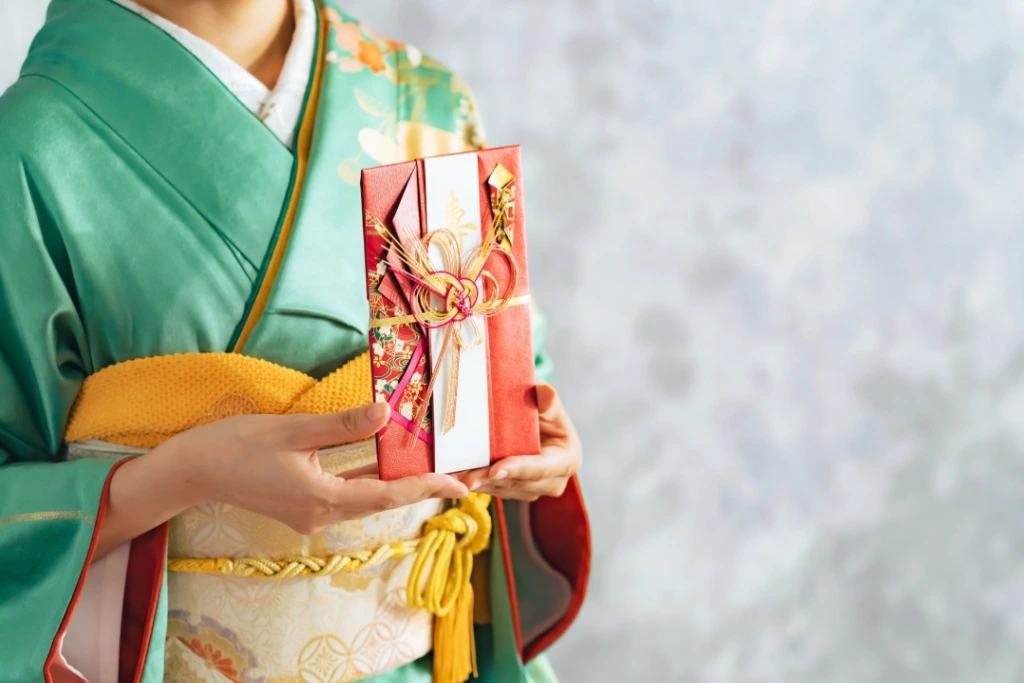
Money Envelopes in Japan: Exploring the World of Shugi Bukuro
Attending a Japanese wedding or celebratory event for the first time can be daunting, especially when it comes to gift-giving. Although it may seem complicated, we’ll break it down so that you have nothing to worry about.


